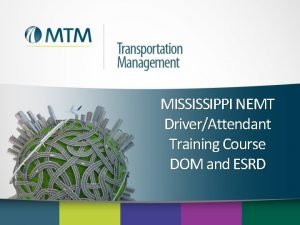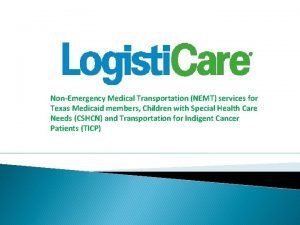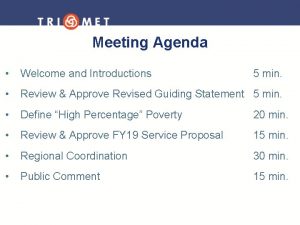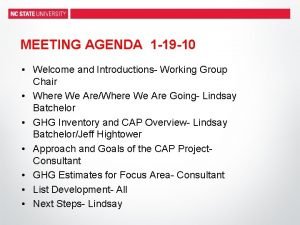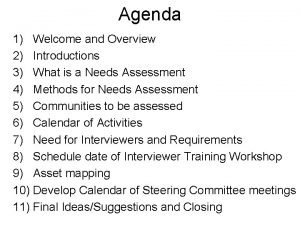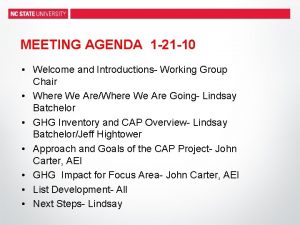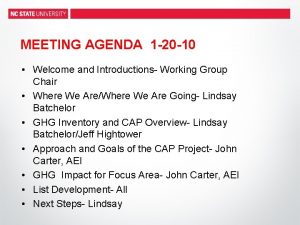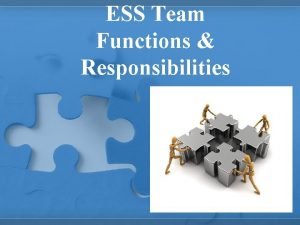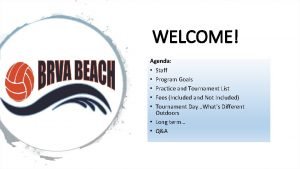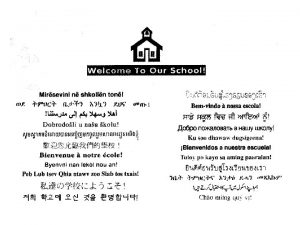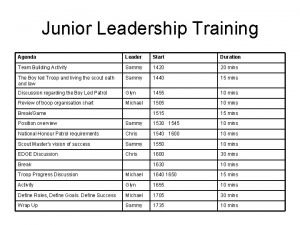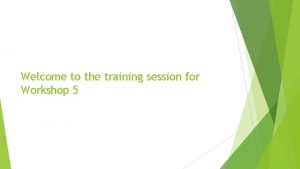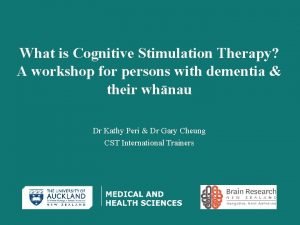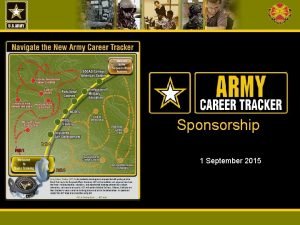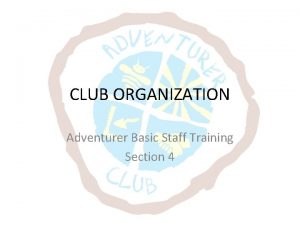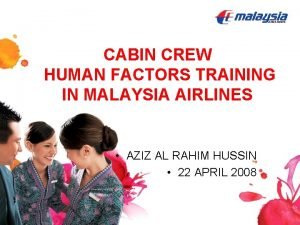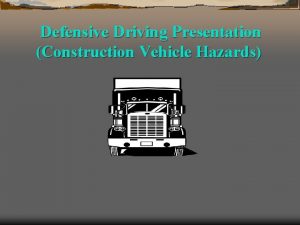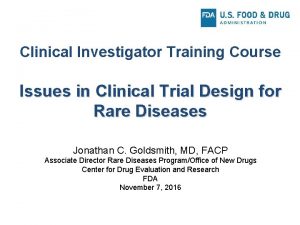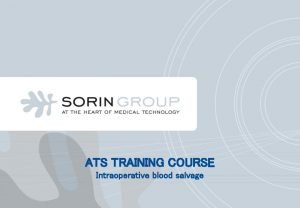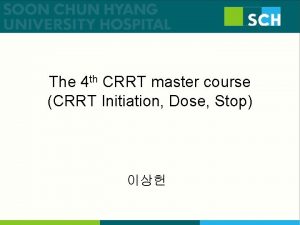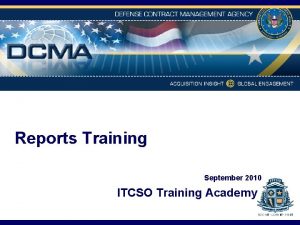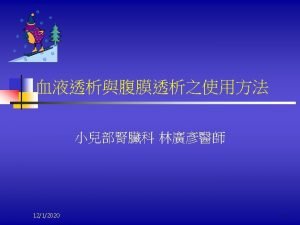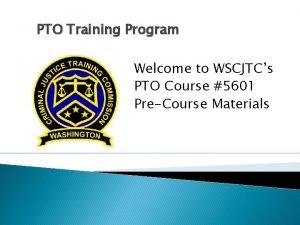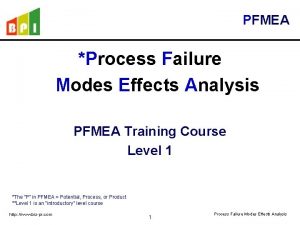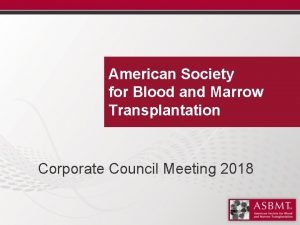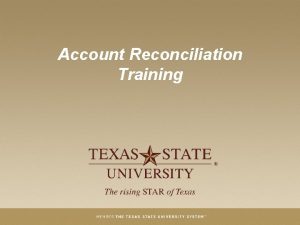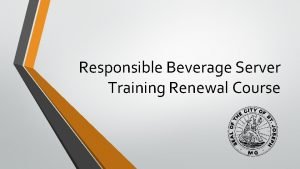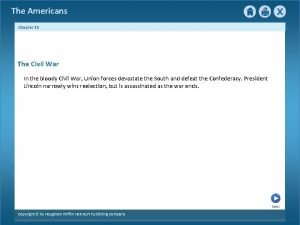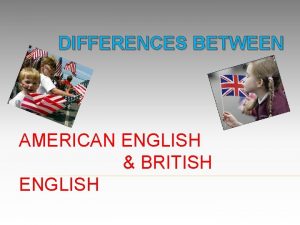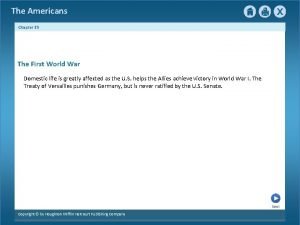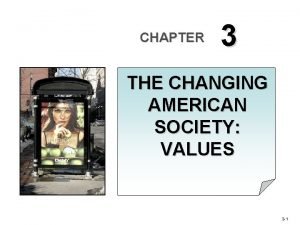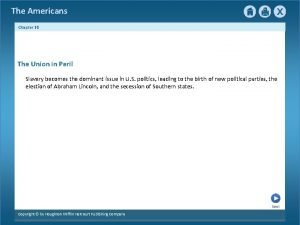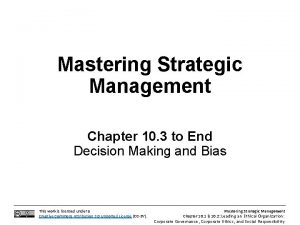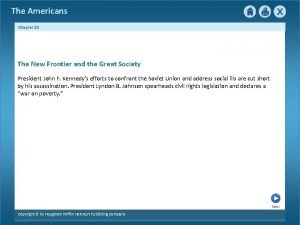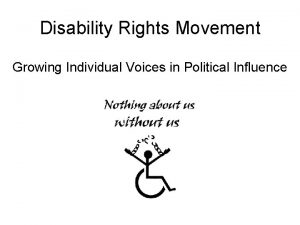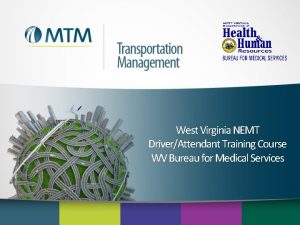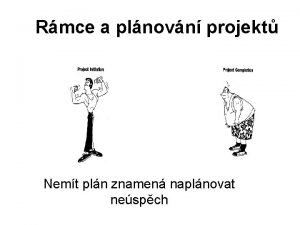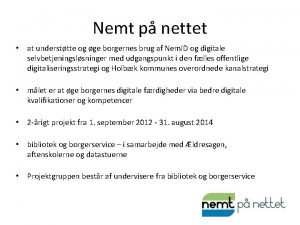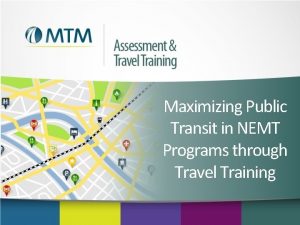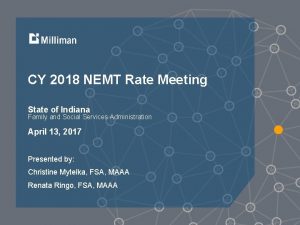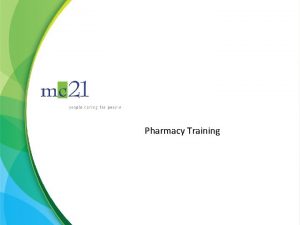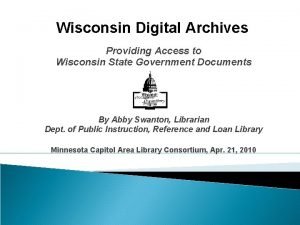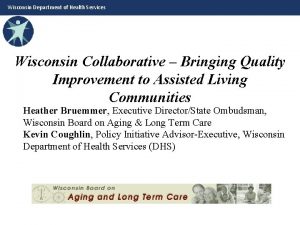Wisconsin NEMT DriverAttendant Training Course Agenda Welcome Americans






































































- Slides: 70

Wisconsin NEMT Driver/Attendant Training Course

Agenda § § § Welcome Americans with Disabilities Act (ADA) & civil rights Transporting the Blind or Visually Impaired Customer service standards Trip Procedures Driver and Attendant Sensitivity Code of conduct Drug & alcohol policy Emergency situations Recordkeeping Quiz

Welcome to MTM Driver Training § Training for transportation providers & drivers • Ensures credentialing compliance • Helps drivers provide safe & courteous service § Contractual requirement for all drivers & attendants serving Wisconsin members • Drivers & attendants must complete training prior to taking MTM-assigned trips • Annual training & re-certification thereafter

ADA & CIVIL RIGHTS

ADA & Civil Rights § “Civil Rights Protection for Over 50 Million Americans” § ADA: a civil rights law enacted by Congress in 1990 • Prior to ADA, inaccessible public transit created barriers to active, productive lives for 43 million Americans with disabilities • Individuals with disabilities were excluded from the workplace, schools & participating as contributing community members § ADA gave individuals with disabilities the same opportunities as others

ADA & Transportation § ADA definition of “person with a disability”: • Individuals with physical/mental impairments that substantially limit one or more major life activities • Individuals with a record of such impairment • Individuals regarded as having an impairment § Addresses transportation provided by public entities & private entity systems

ADA Training Requirements § Vehicle operators must be trained to: • Function vehicles & equipment safely • Provide required level of service • Treat passengers with disabilities in a respectful & courteous way

ADA Service Requirements § Announce stops on request § Permit service animals to accompany passengers § Permit passengers to travel with life support (respirators, portable oxygen, etc. ) § Make appropriate use of accessibility-related equipment § Provide adequate time to board & disembark

Other ADA Requirements § Drivers may not: Discriminate in connection with the provision of transportation Deny service if the passenger is capable of using it Require use of designated priority seats Impose special charges based on disability, gender, religion, national origin, race, or age • Require an attendant • Refuse service solely because the passenger’s disability results in behavior that may offend, annoy, or inconvenience • •

Other ADA Requirements § It is not discrimination to refuse service if the passenger engages in violent, seriously disruptive or illegal conduct

TRANSPORTING THE BLIND OR VISUALLY IMPAIRED

Assisting Someone with Visual Impairment Using the Human Guide Technique: The Human Guide is popularly accepted as the safest, most efficient way for a person with a visual impairment to walk with a sighted person

Establishing Contact § Let the visually impaired person know who you are, and ask if assistance is needed § Never grab the arm of a person who has a vision impairment

Guide and Extend Arm to Guide § While extending your arm to touch the visually impaired person’s hand, suggest that the individual take your arm § Guide either your right or left arm, which can either hang straight at your side or bend at the elbow § The person with a vision impairment will grip your arm just above the elbow with the thumb on the one side and fingers on the other side pointing straight ahead

Guide and Extend Arm Continued § If you use a crutch, support cane or quad cane, offer your arm on the side opposite your mobility aid § If you use a wheelchair have the person hold on to your chair’s push handles

Body Position § As the guide, you should be about half a step ahead of the visually impaired person § If you use a wheelchair, the person with the vision impairment should walk centered directly behind the wheelchair § If your wheelchair is motorized, be sure to maneuver at the lowest speed

Body Position Continued § By using these techniques, you will be able to maintain a conversation, and you will also be the first person to encounter any obstacles § The person who is blind or visually impaired will react to the movement of your arm or wheelchair and any verbal cues you give

Stairs § When coming to stairs, inform the person who is visually impaired, noting whether the stairs go up or down and if there is a railing § Have the visually impaired person switch to your side that is closest to the railing § Describe the stairs as steep, shallow, narrow, broad or curved § The guide makes the first step with the person being guided following behind one step § Inform them when you have reached the top of stairs

Doors § When approaching a door, let the visually impaired person know whether it swings away from you or toward you § Indicate if the visually impaired person should catch the door on the left or the right § As you approach the door, the side with the hinges is the side on which to catch it § Ask the visually impaired person to switch to your side that is closet to the hinge-side of the door

Seating § Bring the visually impaired person into contact with the chair/seat while you describe the part of the chair being touched (back, front, arm) § Describe it as a sofa, stool, swivel chair or rocker § Allow the visually impaired person to seat him or herself

Turning Around § To reverse your direction, simply turn around, maintaining the same grip and body position § The person you are guiding should follow the movement of your arm

Guide Etiquette § As a guide, always tell the person being guided if you are going to leave, even briefly § Avoid leaving a visually impaired person alone in space as this can be disorienting § Put the individual in touch with someone or something such as a piece of furniture or the wall § Communication is key

CUSTOMER SERVICE STANDARDS

Customer Service Standards § At all times, drivers must: • Provide high quality service for all members regardless of age, ability, or disability • Operate vehicles & equipment safely • Assist & treat members in a respectful & courteous way

Customer Service Standards: Communication § Use appropriate & professional language § Accurate & specific § Emphasis on the member first

Customer Service Standards: Identification § Wear or have visible an easily readable official company identification § Properly identify & announce presence at the entrance of the building at the pick-up location

Customer Service Standards: Assistance § Exit the vehicle to open & close doors when passengers enter & exit the vehicle § Provide assistance as necessary to & from the main door of the pick up and drop off destinations

Customer Service Standards: Assistance § When providing assistance, § Ask permission first, do not touch members except as appropriate & necessary. Necessary scenarios include: § Assistance into & out of the vehicle § Helping member into a seat § Securing seatbelts § Rendering first aid & assistance

Customer Service Standards: Comfort § Maintain a comfortable interior cabin temperature while vehicle is occupied by a member or attendant

Customer Service Standards: Safety § Never use a cell phone while driving, unless it is operated as a hands-free device § Never text while driving § Do not wear any type of headphones while on duty

TRIP PROCEDURES

Trip Procedures: Boarding § Provide adequate support & visual/oral directions • Applies to the movement of wheelchairs & mobility-limited members as they enter & exit the vehicle using a wheelchair lift § Drivers are to secure the child safety seats to the vehicle. The parent is responsible for securing the child within the child safety seat. § Prior to allowing vehicle to proceed, confirm that wheelchairs, cots & stretchers are properly secured & that all members are properly seat-belted or secured/ restrained in their mobility device

Trip Procedures: Disembarking § Assist members in exiting the vehicle & moving to the building access of the destination

Trip Procedures: Lift/Ramp Points to Remember § Providers cannot deny service on basis of difficulty in securing a wheelchair § Permit standees to use lift

Trip Procedures: Lift/Ramp Points to Remember § Mobility devices must fit on the lift or ramp & within the “envelope” of securement § Only the vehicle operator should control the lift

Trip Procedures: Lift/Ramp Points to Remember § Four-point floor securement system MUST be used to secure wheelchairs & other mobility devices § Each securement location must have a three-point passenger restraint system

Trip Procedures: Lift/Ramp Maintenance § Regular & frequent lift maintenance programs must be developed & instituted § Report non-operating lifts as soon as possible • Every effort must be made to repair lifts before the next day of service

Trip Procedures: Transfers § Transfer from wheelchair to vehicle seat can be recommended but not required § Assistance in transferring to a seat is required even if driver must leave his/her seat to do so

Trip Procedures: Storage § Store mobility aids & folding wheelchairs for members • Secure in back of vehicle or trunk to avoid movement during transport • Drivers & attendants are not responsible for members’ personal items

DRIVER & ATTENDANT SENSITIVITY

Sensitivity: Seizures § Seizure: sudden uncontrolled muscle contraction resulting from abnormal brain activity § If a member has a seizure: • • • Call for help Assist the member in sitting or lying down Remove objects that could cause injury Place a soft towel or pillow under the member’s head Remain with the member until help arrives

Sensitivity: Dialysis Members § Sometimes people develop disorders and diseases that damage their kidneys. If the kidney disease progresses, it may eventually lead to kidney failure, which requires either regular dialysis or a kidney transplant to maintain a person’s life § Dialysis is a treatment that replaces some of the functions of healthy kidneys

Sensitivity: Dialysis Members § When assisting passengers going to or coming from a kidney dialysis session, keep in mind the following: 1. The member is likely to be tired and slow moving 2. The member might want to use a wheelchair or assistive device to board the vehicle 3. Nausea and stomach distress are common side effects

Sensitivity: Dialysis Members 4. Be careful holding or grabbing a persons by the arm in case they have a fistula or graft. 5. When asking permission to assist, ask the member where to hold them/assist.

Sensitivity: Members with Cancer § Cancer affects our cells, the body’s basic unit of life. Normally the cells grow, divide, and produce more cells as they are needed. Sometime the process goes astray-cells keep dividing when new cells are not needed § The mass of extra cells form a growth or tumor. Tumors can be benign(tumors are not cancer) or malignant(tumors are cancer)

Sensitivity: Members with Cancer § When transporting someone with Cancer: 1. Cancer treatments can cause the inability to restrain bodily functions, including vomiting or incontinence. 2. Prepare for the side effects of treatment by carrying a receptacle, towel(s), and adequate cleaning supplies. 3. Avoid “grabbing” a passenger who has had surgery and may be experiencing pain or tenderness.

Sensitivity: Members with Cancer 3. Cancer treatments can cause exhaustion. Allow for extra time for a fatigued passenger to board and exit the vehicle. Extreme tiredness can cause behavior changes. 4. Cancer treatments can leave passengers susceptible to infections and other illnesses. 5. Make sure the member is seated away from others with colds or other contagious illnesses and in a well ventilated part of the vehicle.

Sensitivity: Children and Day Programs § When transporting children unaccompanied by an adult to a day treatment program please take extra care and consideration for the young client you are serving. This will be the only time a child will be transported without an adult § Should a delay occur, incident happen, or other out of the normal occurrence, please report it to your management so they can quickly to report it to MTM § With all clients reporting problems is required, but clear and timely communications for this young group of members is very important

Sensitivity: Children and Day Programs § Please ensure that the child is buckled in a car seat provided with them at the time of transport (if they are of the size where a car seat is required) § Be aware of the time you are dropping the member off at their destination. • A drop-off too early can result in unsupervised time that puts the child at risk • A late drop-off puts the stability of their care at risk as they are missing their program. Notify MTM immediately if this occurs.

DRIVER & ATTENDANT CODE OF CONDUCT

Conduct: Drugs & Alcohol § No driver or attendant shall use or be under the influence of alcohol, narcotics & illegal drugs or drugs that impair ability to perform while on duty

Conduct: Safety § Prior to vehicle’s departure, confirm that the member is safely inside the destination

Conduct: Food & Beverages § Never eat or consume beverages while in the vehicle, involved with member assistance, or in the presence of members

Conduct: Smoking § Never smoke while in the vehicle, involved with member assistance, or in the presence of members § Smoking is prohibited in vehicles while performing Medicaid transportation service • “No Smoking” signs shall be visible to all passengers

DRUG & ALCOHOL POLICY

Drug & Alcohol Policy § Drivers & attendants must submit signed acknowledgement of receipt & understanding of their employer’s Substance Free Workplace Policy • Drug screening results must be included § MTM maintains pre-employment drug screenings as a credentialing element on the transportation provider website

Drug & Alcohol Policy § Drivers and Attendants: • Must pass an initial drug screen and random screen at least once annually • Third party vendor administers drug & alcohol monitoring program • Must submit to random (at least annually) & post-accident drug & alcohol screenings

Drug & Alcohol Policy § Area Liaison/Contract Representatives: • Communicates results of screenings to the transportation provider & driver/attendant • If driver/attendant is found to be in violation of the Substance Free Workplace Policy § Suspension and termination from providing MTM services

EMERGENCY SITUATIONS

Responding to an Emergency § Provide leadership to passengers • Passengers will look to you for help & direction § Remain calm § Protect yourself, passengers & the vehicle • Prevent injury & death to anyone involved in the situation

Responding to an Emergency § Determine what happened & what actions/inactions will protect the safety of people & property • Reduce vehicle & other property damage • Avoid unnecessary liability claims

Responding to an Emergency § Report incidents & accidents immediately or as soon as is it is safe to do so § Notify dispatch & your supervisor of all emergency situations § Contact emergency services as necessary • Dial 911 for immediate assistance

Reporting Emergency Situations to MTM § File a police report if necessary § Document the situation § Report by using MTM’s Incident/Accident Form (Attachment A)

Attachment A: Incident/Accident Form

ACCURATE RECORDKEEPING

Recordkeeping: Trip Detail § MTM authorizes a trip when a member’s service eligibility is verified § Each trip is assigned a unique number that is communicated on the Trip Sheet (see Attachment B) § Round trip assignments will use the same number • “A” at the end of the number signifies the “to” leg (i. e. : WHSD 80887785 A) • “B” signifies the “from” leg (i. e. : WHSD 80887785 B)

Attachment B: Sample Trip Sheet

Recordkeeping: Trip Logs & Signatures § MTM must receive clear trip documentation to verify member attendance & pay claims § Critical Daily Trip Log (see Attachment C) items: • • • Trip numbers Driver’s license numbers Last five digits of Vehicle Identification Numbers (VINs) Pick-Up & Drop-Off (PUDO) times Signature

Attachment C: Daily Trip Log

Closing § Thank you for your participation § Congratulations on completing the MTM Driver & Attendant Training Course!
 Mtm daily trip log
Mtm daily trip log Logisticare transportation texas
Logisticare transportation texas Agenda sistemica y agenda institucional
Agenda sistemica y agenda institucional Meeting agenda welcome and introductions
Meeting agenda welcome and introductions Agenda welcome and introductions
Agenda welcome and introductions Agenda welcome and introductions
Agenda welcome and introductions Meeting agenda welcome and introductions
Meeting agenda welcome and introductions Agenda welcome and introductions
Agenda welcome and introductions Uhhshare
Uhhshare Agenda welcome and introductions
Agenda welcome and introductions Ess
Ess Meeting agenda welcome and introductions
Meeting agenda welcome and introductions Agenda welcome and introductions
Agenda welcome and introductions Brva beach volleyball
Brva beach volleyball Agenda welcome and introductions
Agenda welcome and introductions Agenda for parent orientation
Agenda for parent orientation Agenda welcome and introductions
Agenda welcome and introductions Agenda welcome and introductions
Agenda welcome and introductions Welcome welcome this is our christmas story
Welcome welcome this is our christmas story Welcome my students
Welcome my students Header bond t junction
Header bond t junction Course title and course number
Course title and course number Course interne course externe
Course interne course externe Leadership training agenda
Leadership training agenda Welcome to the training session
Welcome to the training session Cognitive stimulation therapy training
Cognitive stimulation therapy training Module 7 weights and measures
Module 7 weights and measures Total army sponsorship training course
Total army sponsorship training course Adventurer basic staff training course pdf
Adventurer basic staff training course pdf Cabin crew training malaysia
Cabin crew training malaysia Defensive driving training course ppt
Defensive driving training course ppt Cognitive stimulation therapy training course
Cognitive stimulation therapy training course Fda clinical investigator training course
Fda clinical investigator training course Autotransfusion training course
Autotransfusion training course Colistin crrt dose
Colistin crrt dose Itcso
Itcso Crrt training course 2020
Crrt training course 2020 Pto training course
Pto training course Pfmea training
Pfmea training Asbmt clinical research training course
Asbmt clinical research training course Bank reconciliation training course
Bank reconciliation training course Analytical thinking training course outline
Analytical thinking training course outline Responsible beverage service course
Responsible beverage service course Accounts payable training course
Accounts payable training course Tmva training course
Tmva training course Vcp training course
Vcp training course What did americans underestimate in their eagerness for war
What did americans underestimate in their eagerness for war The americans chapter 11
The americans chapter 11 Coahuiltecan tattoos
Coahuiltecan tattoos Where did native americans come from
Where did native americans come from How many native americans died on the trail of tears
How many native americans died on the trail of tears Different between american english and british english
Different between american english and british english American and british english
American and british english American struggle with postwar issues
American struggle with postwar issues Americans face hard times
Americans face hard times Chapter 19 section 2 american power tips the balance
Chapter 19 section 2 american power tips the balance Americans continue to value an active approach to life.
Americans continue to value an active approach to life. What three circumstances hurt native american
What three circumstances hurt native american Chapter 18 america claims an empire
Chapter 18 america claims an empire Chapter 15 section 2 the challenges of urbanization
Chapter 15 section 2 the challenges of urbanization The americans chapter 10
The americans chapter 10 Pick a card
Pick a card Latin american revolutions definition ap world history
Latin american revolutions definition ap world history Most americans can speak only one
Most americans can speak only one Chapter 28 section 2 the new frontier
Chapter 28 section 2 the new frontier Portuguese sailor
Portuguese sailor This world war 2 cartoon was used to encourage americans to
This world war 2 cartoon was used to encourage americans to Traditional seminole indian food
Traditional seminole indian food Which statement best characterizes american farmers in 1790
Which statement best characterizes american farmers in 1790 Latino americans
Latino americans Diabity
Diabity
